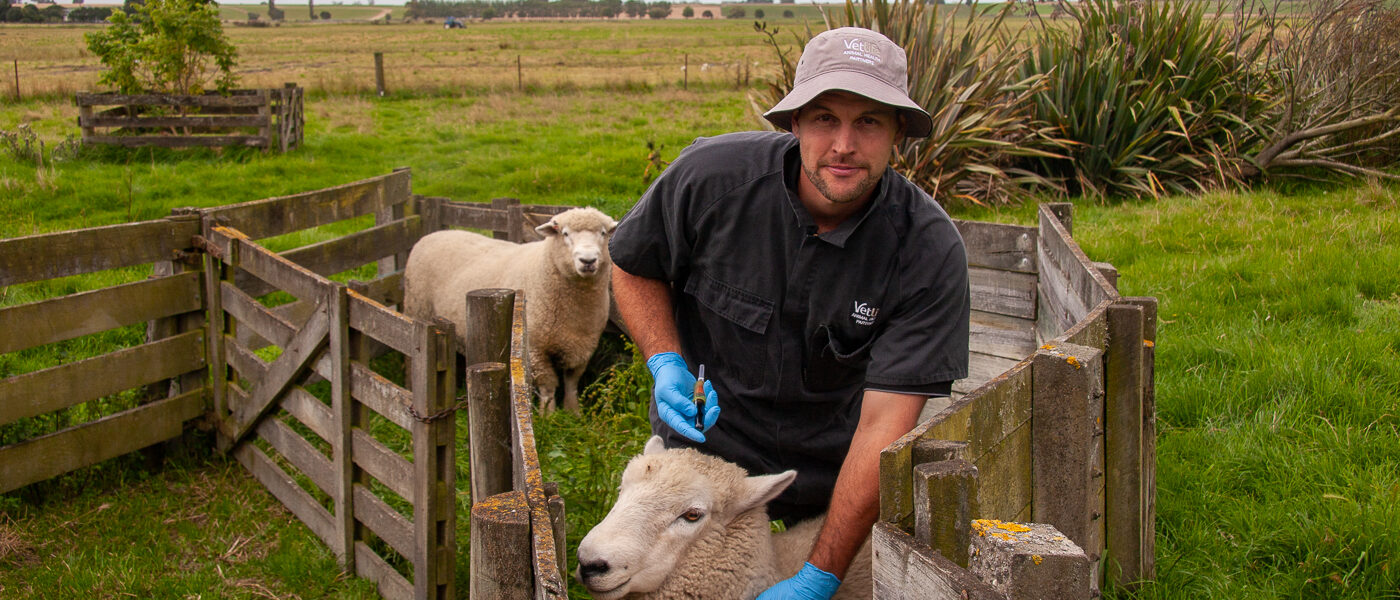
Outside of fine wool production lambing percentage and concurrent lamb survival are key drivers of sheep profitability on many New Zealand sheep and beef farms.
The trace element status of ewe’s pre-tup and through pregnancy may have a profound effect on ovulation rate, implantation rate and embryo survival through pregnancy to the overall health of the new-born lamb.
Selenium need is generally well understood by farmers as New Zealand soils are largely considered deficient in selenium. While selenium deficiency does not tend to impact on conception rates per se it has been shown to impact embryo survivability1. A selenium-responsive study conducted in the South Island resulted in a 12% reduction in barren ewes in selenium-treated ewes compared to untreated ewes.
Selenium may be supplemented with many short-acting treatments in the form of drenches and vaccines. The question arises as to do they last long enough? Long-acting treatment with a product like Selovin LA™ will ensure adequate selenium status of the ewe right through her pregnancy, maximising embryo survivability.
Testing for selenium may be via blood test or liver biopsy and largely will answer the question as to whether your animals are getting enough selenium in their diet or whether they should be supplemented or not. Sufficiency throughout the year is a requirement for good animal health so best practice relies on ensuring sufficiency rather than finding deficiency.
Iodine is necessary to make thyroid hormones and so is important in most metabolic processes of mammals. Like selenium, much of New Zealand is deficient and in particular East Coast of the South Island and inland2. While goitre related to iodine deficiency commonly springs to mind and is not often seen it is the losses associated with subclinical losses that are more relevant. The impact of subclinical iodine deficiency on fertility was demonstrated in Manawatu flocks in 19,983 with iodine-supplemented ewes with up to 21% more lambs born to supplemented ewes than unsupplemented ewes.
Blood testing ewes is fairly simple and the test is accurate at describing what is in the ewe’s diet currently. This is a useful tool if low going into mating as suggests supplementation may be warranted. Other considerations are what the diet will be through gestation as brassicas are inherent in lowering iodine levels due to goitrogenic antagonists. Like selenium, iodine is important to the foetus throughout gestation and may make the difference between the lamb being born and surviving or not.
Again, there are many short-acting products but they require oral drenching ewes pre-tup, scanning and ideally again pre-lamb. Iodised oil (Flexidine®) will last up to 200 days so given 3-4 weeks before mating is a very good option.
As always, consult your Vetlife veterinarian to discuss your requirements going into tupping.
References:
1The Sheep, Health disease and production 3rd edition, page 132
2 The Sheep, Health disease and production 3rd edition, page 175
3 N.D. Sargison, D.M. West & R.G. Clark (1998) The effects of iodine deficiency on ewe fertility and perinatal lamb mortality, New Zealand Veterinary Journal, 46:2, 72-75